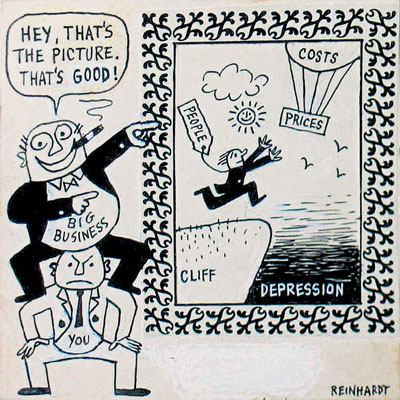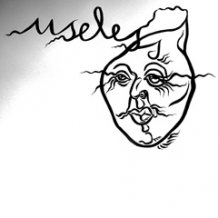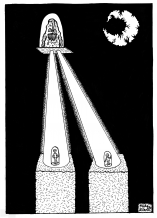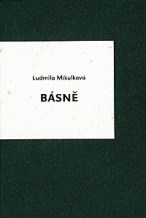| Umělec magazine 2008/1 >> Interview with Robert Shapazian | List of all editions. | ||||||||||||
|
|||||||||||||
Interview with Robert ShapazianUmělec magazine 2008/101.01.2008 Aaron Moulton | catalogue | en cs de es |
|||||||||||||
|
You were the director of Gagosian Gallery in Los Angeles for a number of years and yourself a collector of art, surrealist photography if I am not mistaken. In your work as a dealer, how much of your own interests with aesthetics and developments in contemporary art overlapped with what you were selling?
I was the director of Gagosian Gallery in Los Angeles for ten years; I left two years ago to pursue other things more important to me. I have collected art since I was a teenager, and my interests have included Asian art, French 18th century furniture, experimental photography from 1839 through Surrealism, Russian illustrated books, Marcel Duchamp, Andy Warhol, and modern and contemporary art. So, my comments should be considered in the context of my strong personal interests and my specific place in the art business. In answer to your question: yes, everything I did at the gallery was strongly influenced by my personal relationship to art. Because a collector is most passionate about his own interests, it took time before I could become fully involved and enthusiastic about the diverse tastes and ideas of others—of the various collectors or buyers who came to the gallery. Over time, I learned to respect desires different from my own. Sometimes, I was influenced by commercial considerations—paying attention, so I could find appropriate works to sell. But, essentially, I became fascinated by the hugely diverse reasons people have for acquiring works of art and for feeling strongly about them. Sometimes, it is not good to buy from a dealer who is a collector of the art you are collecting; the dealer might be buying against you—keeping very good works for himself. I am not a saint, believe me. But, I would usually try to influence collectors to buy what I thought was the best, to give them my best personal advice. I sometimes wonder why I did this, because I passed up buying some great works for myself. I think the reason is, I am a teacher at heart (or someone in love with my own verbal performance!), so I tended to become very engaged. Because monetary investment was never a reason for my own collecting, I usually go with ideas and feeling. Perhaps I was not the best kind of commercial art dealer. After all, a dealer’s essential role is “to deal” or, as we would sometimes joke at Gagosian, “to generate an invoice.” Though I like to buy and sell things, it’s not essential to my long standing and, probably, infantile affinity for art. A great love of mine is speaking with artists about their work. I gain great insight about the object and the person. That is moving and inspiring for me. Who do you think has an underappreciated market or an artist whose work was left aside due to the market not meeting expectations yet the work was good? “Good” in whose eyes? Personally, I am not entirely in sync with today’s contemporary art market. That is to say, I think there is much mediocre work pushed to center stage. The art industry needs product, action, energy, and inventory, and must appeal to many points of view. It’s a market place—a souk. Everyone is hawking his wares, shining them up and trying to imbue them with dazzle. This is neither good nor bad; it just is the reality of the enormous market that exists for works of art today. Intense trade, speculation, promotion, sizzle, the conflation with other luxury goods—all this is a reflection of our times. The art market and the art world are shaped by, and also shape, the life around them. It is fascinating and complex, and real. And there is great import in this—like it or not. Vice versa, whose work are we forced to appreciate only because the market says so? I think there are quite a few. “The market” is a complex phenomenon that includes valid appraisals of work, as well as powerfully biased promotion. When you examine the career of a specific artist, you see how many forces are in play. It is hard to generalize about the reasons for success in the art world and in the art market. How would you describe the way in which the atmosphere for collecting and selling art has changed in the last decade? During the last decade, trade has become more intense in every way. This began around 1980. Before that, the art world was a relatively quiet and private place. During the early 1960s, when I began collecting seriously, I never thought of monetary gain. I just hoped, if I were ever strapped for money, I could get back what I spent for a work of art. Everyone I knew was like this. Then, you would visit the great museums of the world and only a few people were wandering around. It was esoteric and quiet. There were few people in great galleries of the Louvre, apart from the amateurs and students who had set up their easels in front of pictures, dutifully copying. It was still very “pre-War.” Of course, the blockbuster traveling exhibition hadn’t been invented. I guess the blockbuster, in all its permutations, is an invention of our time. I have also seen the creation of the colleting category of photography. When I began to collect photos, very few people were doing that, and there were only a few dealers. When I would search for Surrealist photographs in Paris, many people could not believe that I framed them and hung them on the wall, like a work of art. In fact, at the Bibliotheque Nationale, many important photographs that entered the collection early bear the BN ink stamp right in the middle of the photograph. For the curators, the photograph was just a document. Do you go to auctions? As a dealer, I would go. Now, I only go to the previews, if there are things I want to see. I would never go to an auction, just to take in the action, but, many people do. I’m just not interested. How relevant is the term “fair market value” in this camp? Basically, the current monetary value of an object is the price of its last sale, if the economic climate is stable. That’s pretty much the system for any commodity. A work of art is a commodity when it enters the world of trade. Naturally, there are aberrations apparent to those who follow the market: something can go cheaply, or too high—a blip. People (the market) are always sizing things up. That’s doing business. I remember going to auctions in New York and being able to identify everyone in the room, being aware of relationships they had between the people they were bidding against or the work they were bidding on. This is nothing new but I just wondered what your opinion is on why journalism doesn’t report on or analyze these relationships. What does any reporter gain on not naming the involved parties? Very recently I think this has changed but only slightly. In our time, journalism tends to be pretty shallow. Also, people in the art world tend to be secretive, or to say things for ulterior motives. It’s a fairly tough nut to crack, unless a writer wants to plunge in. Why do gallerists frequently bid for their collectors, especially on work by artists they tend to represent? Doesn’t this give the appearance of the gallerist inflating his own market interests? When a dealer bids at auction for a client, both wish to demonstrate publicly that they are “players” of note. The intention is to make a big show—to inflate the perceived prestige of the dealer who shows he has a rich client, and the client who shows he is a big-shot in the eyes of his dealer. Of course, the art work they are chasing at auction must be the sort that will assist this calculated display of importance. This might add some drama to the market of the artist, but it is not out of line with other methods of promotion used in the industry today, some of which can be very devious and extreme. And what about the auction houses bidding on their own lots? It is illegal for owners of consigned lots to bid on them at auction. This appears in all auction consignment contracts. All owners of consigned lots, whether individuals or the auction house, must hold to this rule. It exists to prevent the manipulation of price by the owner, for his benefit. All owners must be held accountable. Otherwise, it is wrong. With the recent article on subsidized exhibitions in the NYTimes, how closely linked do you think commercial and public institutions are nowadays in terms of agenda? It is apparent to all, that money has become an extremely important ingredient. Its prominence has even influenced “aesthetics.” The way we “see” certain works is subtly affected by our perception of their monetary worth and adulation. Anyone who does not acknowledge this is blind or disingenuous. Museums are involved in numerous relationships that link money and works of art. This is part of our time. It is also a primary criterion of “the modern.” After all, Courbet and, thereafter, the Impressionists were very conscious of the market, of presentation, garnering attention, and increasing sales. All this is more intense now, post-Warhol. He saw this clearly and with great relish. Therefore it seems old fashioned for MOCA to refuse a portion of the profits from the Vuitton store in their Murakami exhibition. That store is, by the way, a great addition to the exhibition, because commerce and the fashion business are inherent to Murakami’s art. He has been brilliant, has engaged enormous attention, and that is a sign of his relevance. It is not entirely clear why MOCA refused to share the store profits. Was the decision an aesthetic one, or was the museum afraid of losing its tax free status by being a blatant business partner of Vuitton? Regardless, Vuitton gave money to the museum in other ways—paying for certain elements of the exhibition—so the relationships are complex. Given the many forces pressing down upon museums today, it is inevitable they will be used for some private profiteering. Certainly, this is not the ideal. At the same time, big money influences the art word and the making of art. Museums should be completely frank about it, just as Warhol was. Of course, if there is a crash, many things may change. So, one must acknowledge the presence of the commercial, because it is real and, therefore, full of significance. I am personally not interested in having money and personal promotion intrude in my personal relationship to art. I’m no saint, believe me. But, this is just the way I feel, because of my nature, my generation, and my history. Are there any autonomous structures that can operate outside of what is being determined by the mainstream magazines, a frequent crutch for the market; public institutions, places that seem forced to follow the trends of the magazines and the galleries? Of course. But, these structures are not the center of attention. The mainstream is about attention, getting and giving it, in various ways. So, if you are not operating at the center, you are left to the side. That exterior is extraordinarily rich intellectually and aesthetically, but most people are not interested in spending time there. Most people want to be seen as “players” in the center ring. That defines their relationship to works of art. For instance, if works of art had very little monetary and publicity value, how many people would be interested in art today? The numbers of people would not increase, believe me. Where does one find an honest assessment of the cultural landscape that is unfettered by agenda? Does this exist? Everything, together, is an honest assessment of the cultural landscape, and everything participates in some kind of agenda. That’s reality. It’s not right or wrong. It is just the truth, and is fascinating because of its reality. In your travels have you encountered alternative structures for art that appear to allow a more transparent flow? Where big prices are not present, where there is not the omnipresent rush to buy and sell; life is more easy going and more influenced by a wider range of personal feeling. Intimacy and introspection are not characteristics of the mass market. Are my questions naive? I don’t think so. But, these subjects are complex and have great meaning in terms of our culture, society, and values. However, let me remind you of an insight that has become tragically neglected today. It is stated very beautifully by Charlotte Perriand: “Le sujet n’est pas l’objet, c’est l’homme.” That is to say, objects are not the goal; the goal is human life. That idea is not generally valued in our culture, nor in the art world, nor in the “art industry” today. We have around us excess of all kinds, yet an intimation of essential impoverishment. This interview was conducted on the occasion of the group show entitled “The Art World.” Occurring from November 25 until January 10, 2008 at Feinkost gallery, Berlin.
01.01.2008
Recommended articles
|
|||||||||||||
|
04.02.2020 10:17
Letošní 50. ročník Art Basel přilákal celkem 93 000 návštěvníků a sběratelů z 80 zemí světa. 290 prémiových galerií představilo umělecká díla od počátku 20. století až po současnost. Hlavní sektor přehlídky, tradičně v prvním patře výstavního prostoru, představil 232 předních galerií z celého světa nabízející umění nejvyšší kvality. Veletrh ukázal vzestupný trend prodeje prostřednictvím galerií jak soukromým sbírkám, tak i institucím. Kromě hlavního veletrhu stály za návštěvu i ty přidružené: Volta, Liste a Photo Basel, k tomu doprovodné programy a výstavy v místních institucích, které kvalitou daleko přesahují hranice města tj. Kunsthalle Basel, Kunstmuseum, Tinguely muzeum nebo Fondation Beyeler.
|
































 We Are Rising National Gallery For You! Go to Kyjov by Krásná Lípa no.37.
We Are Rising National Gallery For You! Go to Kyjov by Krásná Lípa no.37.
Comments
There are currently no comments.Add new comment